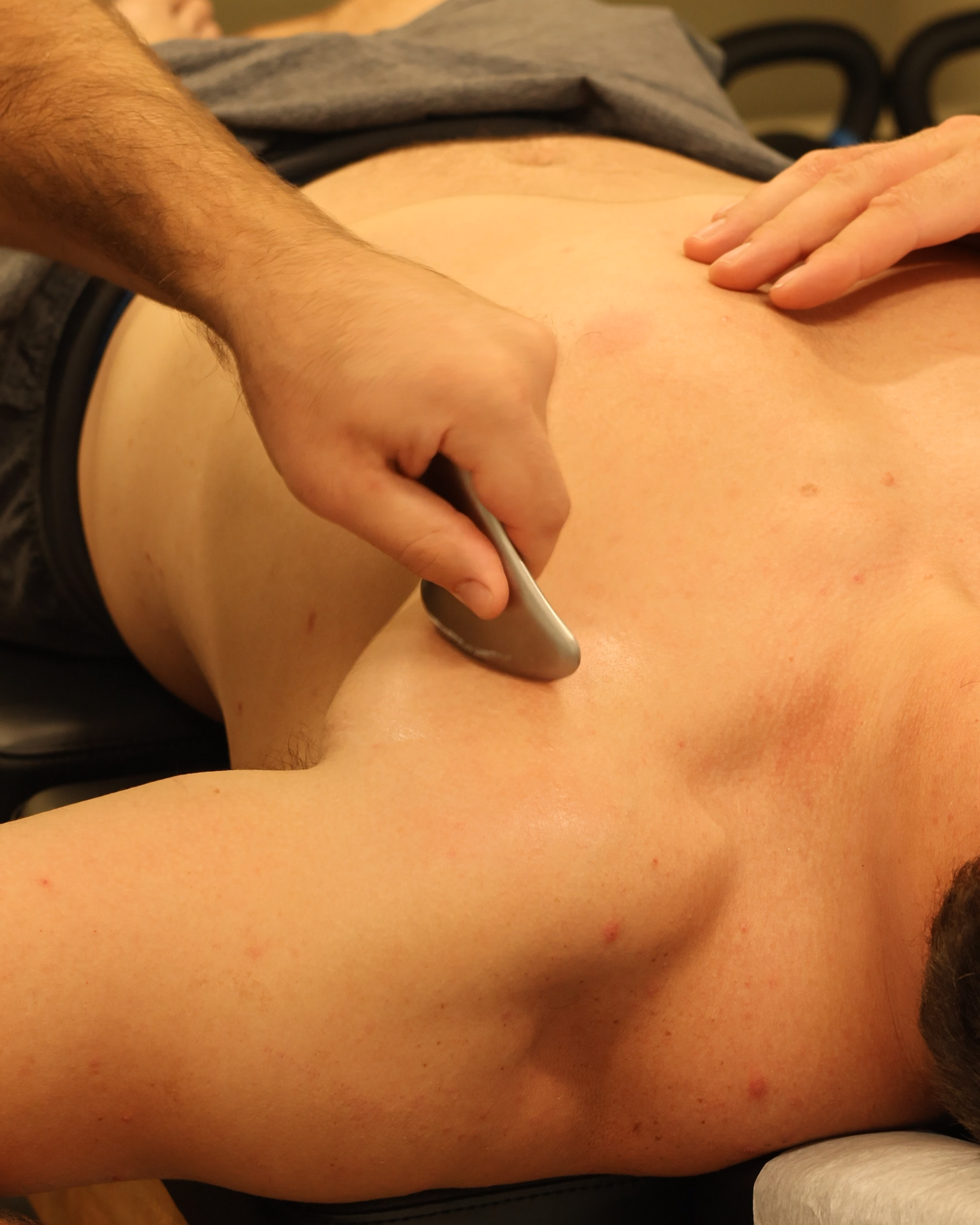Cupping, Scraping, and Taping: Do They Actually Work?
If you’ve ever seen an Olympic swimmer covered in round purple spots or watched an athlete’s knee wrapped in bright strips of tape, you might have wondered: does that stuff actually work? At Optimum Health, we regularly use tools like cupping, scraping, and taping to help patients recover faster, reduce pain, and move better. But what do these techniques really do—and are they worth trying? Let’s break it down.
What is Cupping?
Cupping is an ancient therapy that uses suction cups to pull the skin and underlying tissues upward. This negative pressure helps increase blood flow, loosen tight muscles, and promote recovery. Many people notice improved mobility and less soreness after a cupping session.
Athletes often use cupping to speed up recovery between workouts, while everyday patients benefit from reduced muscle tension and better movement. The circular marks left behind aren’t bruises—they’re simply a sign of increased circulation and usually fade in about a week.
Pro Tip: Expect those temporary spots after your session. They’re a normal part of the healing response.
What is Scraping (IASTM/Gua Sha)?
Scraping, also known as instrument-assisted soft tissue mobilization (IASTM) or Gua Sha, involves using a smooth tool to glide across the skin and fascia. This stimulates blood flow, breaks down adhesions, and encourages the body’s natural healing response.
Scraping can be especially helpful for tendon issues like tennis elbow, runner’s knee, or Achilles tightness. It’s also commonly used to relieve post-workout stiffness. Research shows it can improve short-term mobility and reduce pain, making it a powerful addition to rehab or recovery.
Pro Tip: Scraping shouldn’t hurt. A little redness is normal and shows blood flow is increasing in the area.
What is Taping?
Kinesiology tape (those colorful strips you see on athletes) is designed to support muscles and joints without restricting movement. When applied correctly, it lifts the skin slightly to reduce pressure on pain receptors, improve circulation, and increase body awareness.
Taping can be used for joint stability, swelling reduction, posture correction, and athletic performance. While it’s not a cure on its own, it can help people feel more supported during activity and speed up recovery alongside other treatments.
Pro Tip: Think of taping as a short-term tool. It works best when combined with proper rehab and movement training.
Do They Actually Work?
The short answer: yes—but with context. None of these techniques are magic fixes. On their own, they may provide temporary relief. But when integrated into a personalized plan that includes chiropractic care, rehab, and strength or mobility training, they can be highly effective.
At Optimum Health, we’ve seen patients experience faster recovery, reduced pain, and improved performance when these tools are used in combination with evidence-based rehab strategies.
Ready to Try It?
Curious about how cupping, scraping, or taping could help you? We offer 15- and 30-minute chiropractic and rehab sessions that incorporate these techniques, tailored to your specific needs. These services are incorporated into the sessions at no extra cost. If you’re looking for these services exclusively give us a call at (651)-237-3799 and we’ll take care of you.



